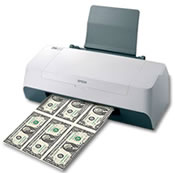 In today's economy, organization - from "mom and pop" stores to giant retailers - are looking for ways to cut costs and improve margins. At the same time consumers are looking to pay less and get more or, unfortunately, even get something for nothing. Businesses are under increasing pressure to identify areas of potential loss and take whatever action is necessary to prevent it. For smaller organizations, significant losses may not only reduce profits but even threaten the enterprise's very survival.
In today's economy, organization - from "mom and pop" stores to giant retailers - are looking for ways to cut costs and improve margins. At the same time consumers are looking to pay less and get more or, unfortunately, even get something for nothing. Businesses are under increasing pressure to identify areas of potential loss and take whatever action is necessary to prevent it. For smaller organizations, significant losses may not only reduce profits but even threaten the enterprise's very survival.
Loss detection is, therefore, essential to business success. In addition to shoplifting and theft of either money or product by employees, there is one other area of potential loss that requires vigilance. That area, one of growing concern among businesses and the U.S. government alike, is counterfeiting.
Should businesses be concerned about counterfeiting? The United States Secret Service arrested 3,028 people for counterfeiting American currency and removed $261 Million in counterfeit dollars from circulation in 2011. You might not believe these to be significant sums until you consider that they only represent activity that actually resulted in arrests and not all suspected activity.
The questions for every business are: Why should I use a counterfeit detector? Even if it's a big problem, is counterfeiting a big enough problem for me?
Let's address the second question by answering it with another question. At what point does a problem become big enough before you do something about it? How much merchandise or service given in exchange for money literally not worth the paper it's printed on is too much?
With technological advances in personal computers, desktop scanners and printers, the ability to counterfeit U.S. currency is widely available. It is possible to reproduce an image of American money of sufficient quality to deceive most people. Unless your employees know what to look for in a bill, expecting them to correctly examine every bill for authentication is unrealistic.
What type of counterfeit detector is right for your business, then? There are many counterfeit detectors that range from simple to very complex. The amount of cash your organization receives in exchange for products and/or services, the number of point-of-sale locations and how many people routinely conduct cash transactions for your business are all factors to consider when choosing your counterfeit detector device.
If you do not take in a large amount of cash, simple visible review aids such as magnifier/jeweler's loops, infra-red viewers, magnetic ink detectors and ultraviolet lights will probably suffice. They are relatively inexpensive, require minimal training to use and won't disrupt the sales transaction by adding a lengthy delay. The major disadvantage to these devices is that when using a visible review aid, a person is entrusted to make a judgment call whether security features that distinguish real bills from fake are present.
probably suffice. They are relatively inexpensive, require minimal training to use and won't disrupt the sales transaction by adding a lengthy delay. The major disadvantage to these devices is that when using a visible review aid, a person is entrusted to make a judgment call whether security features that distinguish real bills from fake are present.
If you are a cash business (e.g., retail/grocery stores, bars/restaurants) or you employ temporary employees or experience high employee turnover, the second category of currency authentication devices is probably right for you. These devices utilize software which tells the examiner what the device "sees". Called advanced analysis devices, these machines contain "built-in" logic that ensures greater accuracy because they do not rely solely on the perception of the examiner.
 The most sophisticated advanced analysis devices are called machine readable character reading devices (MRCs), counterfeit detectors that "read" the security elements placed into U.S. currency. Of these, Data Compare Devices are the most sophisticated, utilizing software that identifies the document, extracts data from it and compares that data with data found in authentic currency.
The most sophisticated advanced analysis devices are called machine readable character reading devices (MRCs), counterfeit detectors that "read" the security elements placed into U.S. currency. Of these, Data Compare Devices are the most sophisticated, utilizing software that identifies the document, extracts data from it and compares that data with data found in authentic currency.
Reducing risk and minimizing loss: The only reasons you really need for using a counterfeit detector.


